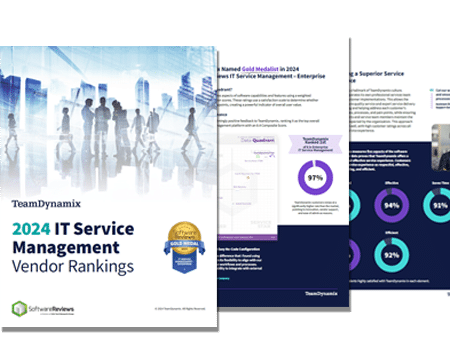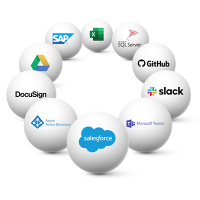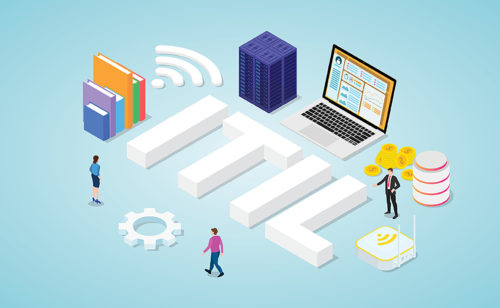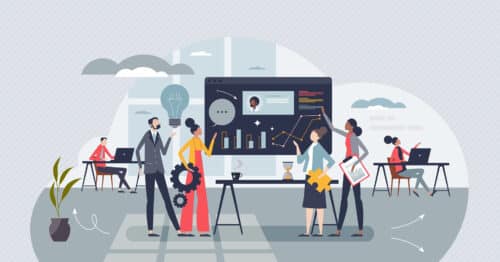
Companies Say They Need Automation, Easy-to-Manage ITSM
A study from Information Week and TeamDynamix shows companies are looking to invest in IT Service Management (ITSM) software that is simple to administer and

The Info-Tech ranking report offers a unique view of the market based entirely on in-depth customer interviews. Download the Info-Tech ITSM Quadrant and Customer Viewpoint report today.

We’ll show you some of our best situations and show you exactly how to execute them to get immediate results. The best part is, iPaaS tools often feature easy-to-use click and drag functionality, meaning you don’t need a dedicated employee building integrations and workflows.

System Integrators, Value Added Resellers, Technology Providers, and Buying Consortiums can benefit from a partnership with TeamDynamix.

The Info-Tech ranking report offers a unique view of the market based entirely on in-depth customer interviews. Download the Info-Tech ITSM Quadrant and Customer Viewpoint report to gain a better understanding of key vendor strengths and emerging market requirements.
Did you know that, according to HDI, a support call costs $22 compared to self-service which costs just $2 per incident?
As companies look for ways to save on costs, it’s clear that there needs to be a push toward including self-service in all IT Service Management (ITSM) initiatives.
To drive the adoption of self-service, it’s important to have an easy-to-use, searchable portal. If your portals are complex and hard to use, then your efforts to save money will be fruitless as no one will use the portal for service and your call volumes will skyrocket. Here are a few best practices you can follow to create robust end-user portals that will save you time and resources while keeping your customers happy.
If you want people to use your portal it should look and feel welcoming.
Your portal needs to be easy to navigate, include graphical elements (i.e., branding, images, etc.) that your users will recognize, and you should use jargon-free language to get your message across. For example, a button that says “Get Help” will likely perform better than a button that says “Submit Ticket.” Be clear and direct with all of your calls to action and messaging.
In terms of creating self-service portals, they should be easy to build and easy to maintain. This means no specialized technical skills like coding or scripting should be needed to get your portal up and running, and you shouldn’t need dedicated resources to manage it either. Anyone in your organization should be able to log in with their credentials and make changes, as needed, to better serve the users of your portal.
With a highly configurable portal, you can be strategic in your efforts as well—first focusing on frequently asked questions and those issues that contribute to a high volume of incoming help desk tickets.
Over time, you’ll be able to grow and evolve your end-user portal into a valuable resource that people will learn to turn to first, freeing up your IT staff to focus on higher-priority tasks and projects.
All-in-all, an engaging portal enables you to deliver on the promise of high-quality ITSM for your customers and employees.
At Ellsworth Adhesives, they use TeamDynamix for their ITSM needs and have been impressed with what they’ve been able to achieve using their portal. The company is a global corporation that supplies a wide range of adhesives, sealants, lubricants, coatings, encapsulants, tapes, soldering products, surface preparations, specialty chemicals and dispensing equipment.
After switching to TeamDynamix for ITSM/Enterprise Service Management (ESM), the team at Ellsworth Adhesives launched a self-service portal and it’s been a game-changer.
Within the IT department, the help desk used to receive about 80 percent of service requests through email, 15 percent through phone calls and walkups and only 5 percent through the service portal.
Now, 95 percent of requests come through the portal, 5 percent come through walkups, and the help desk team no longer accepts email requests.
To make it as easy as possible for people to use the service portal, the IT department created an app that opens the portal automatically on employees’ desktops.
“We were getting 80 to 90 service requests per day, and the help desk team couldn’t filter and rout them all quickly enough,” Adam Crichlow, IT service desk manager, said. With the portal, however, this all happens automatically. This shift alone has cut the time it takes from creating to resolving a service ticket nearly in half.
Using TeamDynamix “has freed up staff time right away,” Crichlow said—a benefit the company realized “almost on day one” of using the system.
As other departments have seen the efficiencies that TeamDynamix has created, they’ve also adopted the ESM system. The latest department to create its own service portal using the platform is the Environmental Health and Safety team, which never used the old ticketing system for service management before.
Along with being easy to navigate and written in clear, direct language, stellar portals also leverage a knowledge base (KB) within the portal that is highly indexed, provides quick links to the most accessed content, makes it easy to enhance content and is accessible on mobile devices.
But since a knowledge base is only as good as the content it contains, it’s good to follow industry best practices for creating and curating knowledge content in your end-user portal.
Knowledge-Centered Service (KCS®) relies on the notion that content is generated as problems arise. While KCS started in ITSM, it’s now being adopted across the enterprise.
KB articles are living assets that can be leveraged by both the users and technicians. Using a portal with a KB usually translates into a dramatic increase in first contact resolution (30-50%).
When creating an end-user portal, it is important to be as accessible as possible, meaning it should be WCAG 2.0/508 compliant.
Not only should the site be easy to navigate, but it should be made available to everyone. By not focusing on accessibility, you are likely alienating a portion of your customers or employees – making it more difficult for them to resolve the issues they may be having. You can read more about the accessibility features offered by TeamDynamix here.
If you want to see a collection of stellar self-service portals, including portals that are WCAG 2.0/508 compliant, here are some examples from actual TeamDynamix customers.
In addition to WCAG 2.0 compliance, you’ll want to make sure your portal design makes sense for your users. A great way to do this is to practice human-centered design.
Human-centered design is a creative approach to problem-solving that focuses on users’ needs and requirements by researching and observing how people use certain services, and identifying how their experience can be improved.
Human-centered design has a few fundamental principles that are applicable to the implementation of an IT service portal within an organization, like the following:
At Grand Rapids Community College Kelley Webber, a support desk coordinator, saw the value in implementing a human-centered design approach to the college’s ITSM strategy.
Establishing an IT service portal was supposed to make life easier for tech support staff because they wouldn’t have to spend as much time on the phone trying to understand the nature of users’ issues. However, Webber and her team found that fewer than 5 percent of support tickets were being initiated through the service portal, while 60 percent still originated through phone calls.
They set out to redesign the service portal and service catalog to make it more user-centric so that more stakeholders would engage with it.
To do this, they worked with focus groups. “We had users sit down at a computer, and we watched them interact with our IT service catalog to see their reactions,” Webber says. “We realized many users didn’t understand the verbiage or icons we were using.”
For instance, the service portal had a category for “Telephony Services,” but most students didn’t understand this term. “They thought it was a made-up word,” Webber says. The newly redesigned portal will use the service catalog category “Campus Phones and Conferencing Services” instead.
What’s more, end-users didn’t know they should choose the service category “Software Requests” if they had a problem with their mobile campus app, because they didn’t realize apps and software were the same things. “We had an old-school mentality that it was all just software,” Webber says. The redesigned portal will change the name of this service category to “Apps and Software” to make this clearer to users.
But the biggest lesson to come out of the focus groups was a reminder of why it’s important not to make assumptions. Webber and her team thought that simply redesigning the service portal would lead to greater use — yet they learned many students weren’t aware of its existence. “We never stopped to think whether students even knew how to get to it,” she acknowledges.
To read more about Grand Rapids Community College’s experience, check out: Human-Centered Design Helps Grand Rapids Community College Engage with IT Users More Effectively.
KCS® is a service mark of the Consortium for Service Innovation™.
Editor’s note: This post was originally published in July 2019 and has been updated with new information.

A study from Information Week and TeamDynamix shows companies are looking to invest in IT Service Management (ITSM) software that is simple to administer and

When it comes to improving IT Service Management (ITSM) maturity, many organizations turn to ITIL – a framework that guides users through a process-based approach

Enterprise Service Management (ESM) is the practice of extending IT Service Management (ITSM) principles beyond the IT department to other areas of an organization. ESM
TeamDynamix’s award-winning SaaS cloud solution offers IT Service and Project Management together on one platform with enterprise integration and automation.
[email protected]
(877) 752-6196
Contact Us
